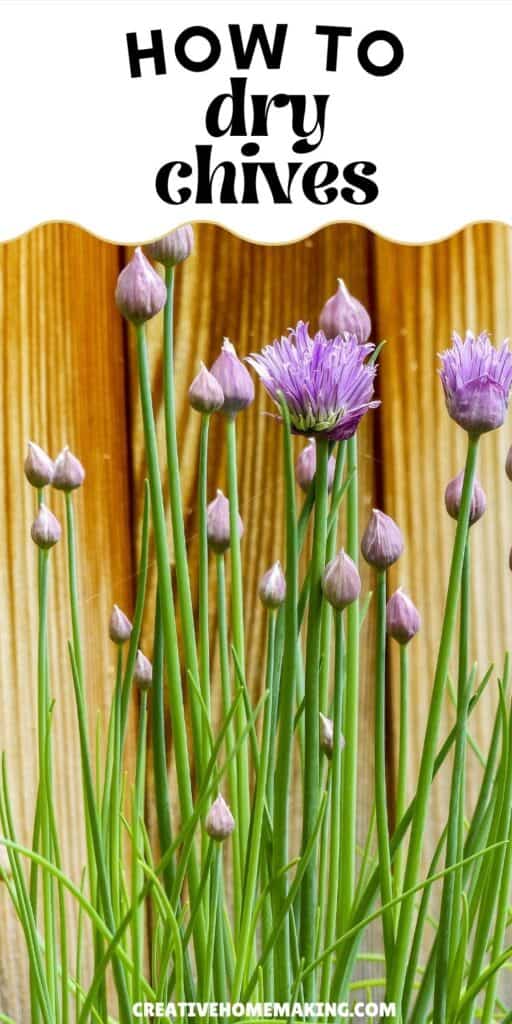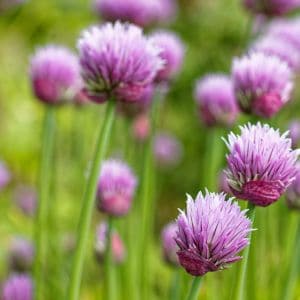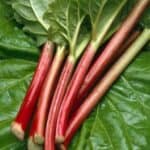Drying chives is an easy way to keep their fresh flavor all year long. You can dry chives by air-drying, using an oven, or a food dehydrator, which helps preserve their mild onion taste for cooking later. Once dried, they store well and can add a nice touch to dishes like potatoes, eggs, and soups whenever you want.
This post may contain affiliate links.
You don’t need fancy tools to dry chives. Air-drying is simple and doesn’t require electricity, while oven or dehydrator methods speed up the process if you want quicker results. This guide will walk you through each way so you can choose what works best for you.
Related Article: How to Grow Chives Easily in Your Home Garden

Methods for Drying Chives
You can dry chives in several ways that keep their flavor and color. Each method needs clean, chopped chives and careful drying to avoid losing their taste. You will want to pick what suits your time and equipment best.
Air Drying Chives
Air drying is simple and doesn’t require special tools. Start by rinsing your chives and patting them dry gently. Then, tie them into small bundles using kitchen twine.
Hang the bundles upside down in a warm, dry place with good air flow. Avoid direct sunlight to keep the color fresh. It usually takes about 1 to 2 weeks for chives to dry fully this way.
Related Article: Companion Plants for Chives to Boost Your Garden’s Health and Flavor
Check the chives regularly. When they crumble easily between your fingers, they’re done. You can store them in an airtight jar away from light and moisture.

Oven Drying Chives
Oven drying is faster but needs more attention. First, preheat your oven to a low setting, around 130°F to 170°F (55°C to 75°C). Spread chopped or whole chives in a single layer on a baking sheet lined with parchment paper.
Keep the oven door slightly open to allow moisture to escape. Check the chives every 15 minutes and stir them gently for even drying.
This method usually takes 1 to 2 hours. Be careful not to burn the chives, as heat can reduce flavor. Once dry, cool them before storing in a sealed container.
Related Article: How to Dry Lavender: Simple Techniques for Preserving Its Fragrance
Using a Dehydrator
A food dehydrator is a handy tool if you want convenience and control. Set your dehydrator to a temperature between 95°F and 125°F (35°C to 50°C).
Place the chopped chives on the trays, spreading them out evenly. Drying time can vary but normally takes about 1 to 4 hours depending on humidity and thickness.
Check often to avoid overdrying. Chives are done when they snap easily. Store them in airtight containers in a cool, dark place to keep their flavor longer.
Related Article: How to Dehydrate Onions: A Beginner’s Guide
Storing and Using Dried Chives
To keep your dried chives fresh and tasty, you need to store them properly and use them in a way that brings out their flavor. This means keeping moisture out, protecting their color, and adding them at the right time when cooking.
Best Storage Practices
Store your dried chives in airtight containers like glass jars or small mason jars. Keep the containers in a cool, dry place away from sunlight. You want to avoid heat and moisture because they can make your chives lose flavor and go bad faster.
Label your jars with the drying date to track freshness. Dried chives usually last up to six months when stored well. If you notice clumps or a strange smell, it means moisture got inside, and the chives should be thrown out.
Maintaining Flavor and Color
To keep your chives’ color and flavor, don’t expose them to light or air for too long. Oxygen and sunlight break down their natural oils, which give chives their taste and bright green color.
Only open the jar when you need a small amount. This way, you reduce the time the dried chives are exposed to air. Using smaller containers can help, so you don’t open one jar often. Store dried chives in a dark cupboard or pantry.
Cooking Tips for Dried Chives
Dried chives release their flavor best when added at the end of cooking. Add them just before serving foods like soups, sauces, and dips to keep their mild onion taste.
Since drying concentrates flavor, use about one-third the amount of dried chives compared to fresh ones. For example:
| Fresh chives | Dried chives |
|---|---|
| 1 tablespoon | 1 teaspoon |
Avoid cooking dried chives too long, as heat can dull their flavor. Sprinkle them over finished dishes or mix in cold recipes like salad dressings for the best taste.
Follow my Chives board on Pinterest.




